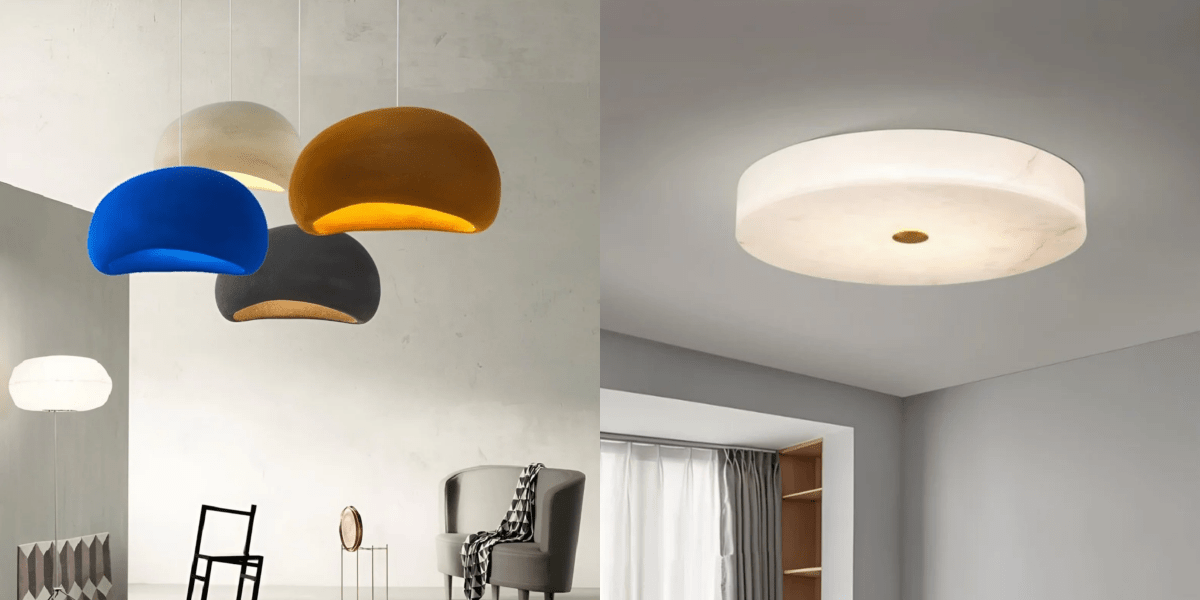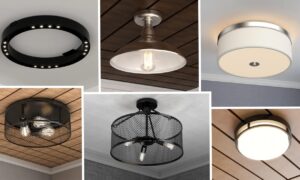Lighting is a powerful design tool—it can open up a small space, create ambiance, or even act as a statement piece. When it comes to ceiling lighting, two of the most widely used styles are flush mount lights and pendant lights. While they both serve the purpose of illumination, their designs, functions, and ideal placement are quite different. So, how do you choose the right one for your home?
Let’s explore the key differences and when to use each for the best effect.
Flush Mount Lights: Clean, Compact, and Functional
Flush mount lights are fixtures that sit directly against the ceiling, making them perfect for spaces with low ceilings or where you want a more discreet lighting option. These lights provide wide, ambient illumination without overwhelming the room.
Advantages of Flush Mount Lights:
- Space-Saving: Ideal for rooms with low ceilings such as basements, hallways, or small bedrooms.
- Subtle Design: Offers a clean, minimalistic look without taking visual space.
- Even Lighting: Provides uniform, general lighting to cover large areas.
Flush mount lights are a practical solution for those who want efficient lighting without making a bold design statement. They’re particularly useful in functional spaces like laundry rooms, closets, or compact apartments.
Pendant Lights: A Stylish Focal Point
Unlike flush mount fixtures, pendant lights hang from the ceiling via a cord, chain, or rod. This makes them better suited for rooms with higher ceilings or areas where you want to draw the eye. Available in endless styles—from industrial and farmhouse to ultra-modern—pendant lights are as decorative as they are practical.
Benefits of Pendant Lights:
- Design Statement: Perfect for creating visual interest in kitchens, dining rooms, or entryways.
- Customizable Height: Can be adjusted to suit the room’s proportions and the lighting needs.
- Task Lighting: Focused light makes them ideal for kitchen islands, desks, and reading areas.
Pendant lights are more than just light sources—they are decor elements that can define the style and mood of a room.
Flush Mount Lights vs. Pendant Lights: When to Use Each
Here’s a simple guide to help you choose between the two:
- Ceiling Height: If your ceiling is under 8 feet high, go for flush mount lights. For ceilings 9 feet and above, pendant lights can be a great option.
- Purpose of the Room: Use flush mounts in rooms where you need broad, even lighting. Use pendant lights where you need focused task lighting or want a decorative element.
- Style Considerations: Flush mounts are sleek and functional, while pendants allow more personal style and creativity.
Combining the Two in One Home
You don’t have to pick just one. Many well-designed homes successfully combine flush mount lights and pendant lights to create layered lighting and visual interest. For example, you might use flush mounts in the hallway or bathroom while using pendant lights in the kitchen or living room.
Example Layout:
- Kitchen: Pendant lights over the island + flush mount in the pantry or ceiling corners.
- Hallway: Flush mount lights for general illumination.
- Entryway: A stylish pendant light to make a strong first impression.
This mix not only improves lighting functionality but also adds variety and depth to your interior design.
Final Thoughts
Both flush mount lights and pendant lights have a place in well-thought-out interiors. Flush mounts are practical and understated, while pendant lights offer style and character. By understanding the strengths of each, you can make smart design choices that enhance the look and feel of every room in your home.
Lighting isn’t just about visibility—it’s about personality. And whether you go for flush mount efficiency or pendant charm, your space will shine.































